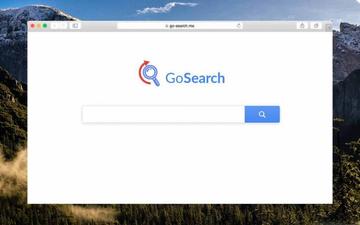Once the GoSearch threat surreptitiously infiltrates a Mac, it causes unwanted browser redirects and a series of other issues while surviving regular removal.
What is GoSearch virus?
Overlooking the GoSearch Mac virus attack is a recipe for trouble. Unfortunately, falling victim to this threat is ridiculously easy, and recovering from the predicament is a challenge few users can take up. Also known as GoSearch3 or Go Search3, it is a classic instance of a present-day Mac infection that combines browser takeover, personal data harvesting, and opportunistic malware footprint. Having snuck into a system as part of an ostensibly legitimate bundle, it creates a configuration profile that allows it to manage the web browsing preferences in Safari, Google Chrome, and Mozilla Firefox. This way, the culprit replaces the victim’s default web navigation settings with GoSearch, a junk service pretending to deliver advanced search features. By the way, although the device profile spawning trick is rumored to be thwarted with the upcoming macOS 11 Big Sur release, it still works and cybercriminals are seizing the moment to pump out malware that follows this notorious route of persistence.
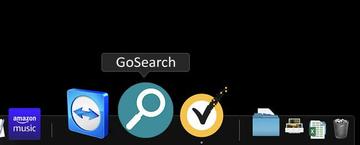
Symptoms of GoSearch infection on Mac
As previously mentioned, the most conspicuous after-effect of the GoSearch virus incursion lies in the scope of deteriorating the user’s web surfing activities. It skews the homepage, search provider, and new tab page preferences in the default browser by inserting a rogue URL without explicitly asking for permission. As a result, all Internet sessions, including Google searches, will be forcibly redirected to one of the knock-off search engines with GoSearch branding. The most commonly encountered dodgy pages from this pool are as follows:
- go-search.me;
- gosearch.me;
- gosearchresults.com.
It’s noteworthy that none of these is the final destination the crooks want their victims to visit. They are conduits in a multi-pronged traffic redistribution wave that lands users on Yahoo or Bing results pages while routing the web navigation through a merry-go-round of intermediate sites – advertising networks, for the most part. This tactic earns GoSearch authors a good deal affiliate revenue at the expense of regular Mac users’ normal online experience.
GoSearch may re-infect your Mac multiple times unless you delete all of its fragments, including hidden ones. Therefore, it is recommended to download Combo Cleaner and scan your system for these stubborn files. This way, you may reduce the cleanup time from hours to minutes.
Download Now Learn how Combo Cleaner works. If the utility spots malicious code, you will need to buy a license to get rid of it.This unauthorized overhaul of the main Internet settings is merely one of the building blocks of this malware operation. GoSearch appears to be in cahoots with fake optimization software, given that the emergence of both types of infections overlaps in many scenarios. In other words, the quandary will typically involve exaggerated system scans generated by an application portraying itself as a must-have Mac performance booster. The goal of this pseudo-reporting of issues is to bilk the victim of a registration fee that will supposedly unlock the full feature set of the self-proclaimed optimizer.
Sneaky data harvesting
One more shade of GoSearch virus is hidden in plain sight, and yet it’s potentially more impactful than all the nuisance effects described above. It amasses information that may allow a competent adversary to profile the user and their computer system. These details span, among other things, the web browsing history log, installed applications, the version of macOS in use, IP address, and geolocation. The entirety of this data can give malicious actors clues on the person’s pain points and the software vulnerabilities their Mac has. This is enough to pull off a highly effective phishing attack or to deposit zero-click malware onto the machine via known security loopholes.
How to stay safe?
Because GoSearch malware relies on bundling as the primary propagation vector, avoiding it is a matter of exerting caution with suspicious installations. The risk escalates considerably if a seemingly harmless app’s installer is downloaded off of an unofficial resource with a track record of touting malicious programs in the past. The good news is, it’s easy to avoid the trap – all it takes is selecting the custom (or advanced) setup option and unchecking everything that doesn’t belong there. The bad news, though, is that most users don’t bother making that trivial extra step, only to discover their Macs being hit by the likes of GoSearch. Keep this in mind to steer clear of this threat. If it’s already on board, the following instructions will help purge it for good.
GoSearch virus manual removal for Mac
The steps listed below will walk you through the removal of this malicious application. Be sure to follow the instructions in the specified order.
Expand the Go menu in your Mac’s Finder bar and select Utilities as shown below.
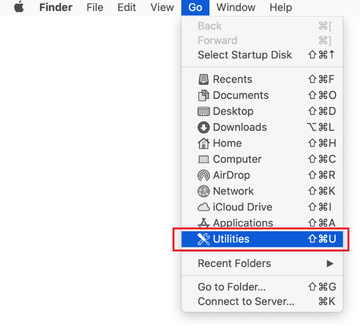
Locate the Activity Monitor icon on the Utilities screen and double-click on it.
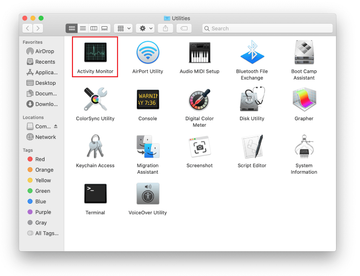
In the Activity Monitor app, look for GoSearch, GoSearch3, or another process that appears suspicious. To narrow down your search, focus on unfamiliar resource-intensive entries on the list. Keep in mind that its name isn’t necessarily related to the way the threat is manifesting itself, so you’ll need to trust your own judgement. If you pinpoint the culprit, select it and click on the Stop icon in the upper left-hand corner of the screen.
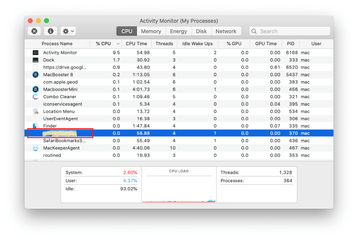
When a follow-up dialog pops up asking if you are sure you want to quit the troublemaking process, select the Force Quit option.
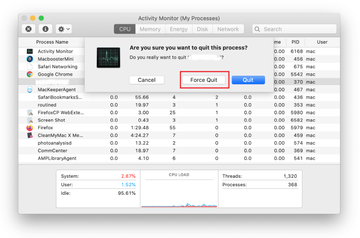
Click on the Go menu icon in the Finder again and select Go to Folder. You can as well use the Command-Shift-G keyboard shortcut.
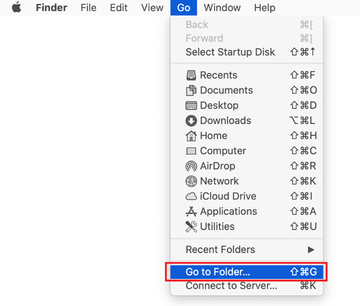
Type /Library/LaunchAgents in the folder search dialog and click on the Go button.

Examine the contents of the LaunchAgents folder for dubious-looking items. Be advised that the names of files spawned by malware may give no clear clues that they are malicious, so you should look for recently added entities that appear to deviate from the norm.
As an illustration, here are several examples of LaunchAgents related to mainstream Mac infections: com.pcv.hlpramc.plist, com.updater.mcy.plist, com.avickUpd.plist, and com.msp.agent.plist. If you spot files that don’t belong on the list, go ahead and drag them to the Trash.
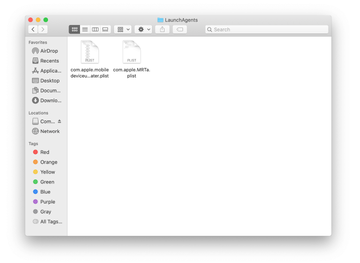
Use the Go to Folder lookup feature again to navigate to the folder named ~/Library/Application Support (note the tilde symbol prepended to the path).
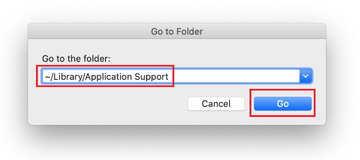
When the Application Support directory is opened, identify recently generated suspicious folders in it and send them to the Trash. A quick tip is to look for items whose names have nothing to do with Apple products or apps you knowingly installed. A few examples of known-malicious folder names are GoSearch, ProgressMatch, SystemSpecial, and IdeaShared.
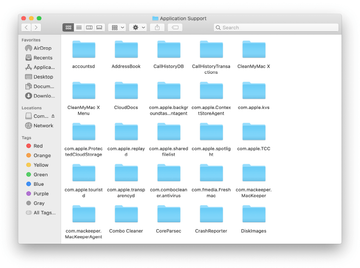
Enter ~/Library/LaunchAgents string (don’t forget to include the tilde character) in the Go to Folder search area.
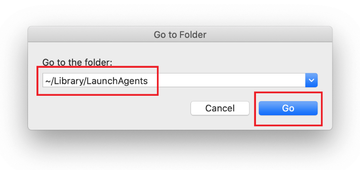
The system will display LaunchAgents residing in the current user’s Home directory. Look for dodgy items related to [VIRUSNAME] virus (see logic highlighted in subsections above) and drag the suspects to the Trash.
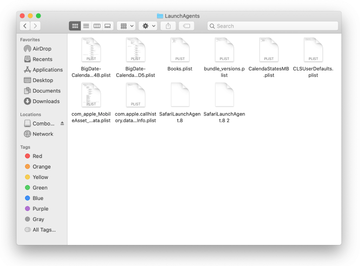
Type /Library/LaunchDaemons in the Go to Folder search field.

In the LaunchDaemons path, try to pinpoint the files the malware is using for persistence. Several examples of such items cropped by Mac infections are com.pplauncher.plist, com.startup.plist, and com.ExpertModuleSearchDaemon.plist. Delete the sketchy files immediately.
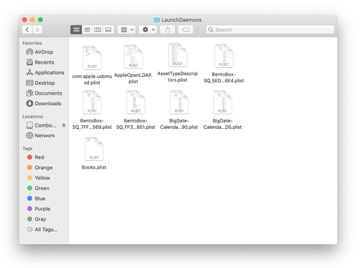
Click on the Go menu icon in your Mac’s Finder and select Applications on the list.
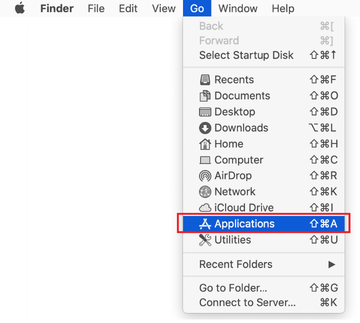
Find the entry for GoSearch (GoSearch3, Go Search3) or another app that clearly doesn’t belong there and move it to the Trash. If this action requires your admin password for confirmation, go ahead and enter it.
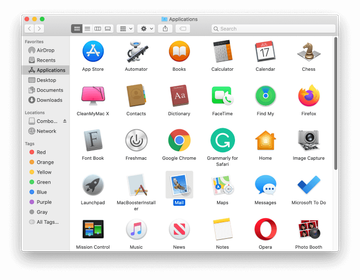
Expand the Apple menu and select System Preferences.
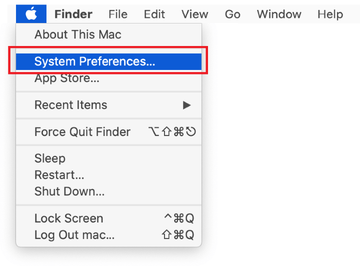
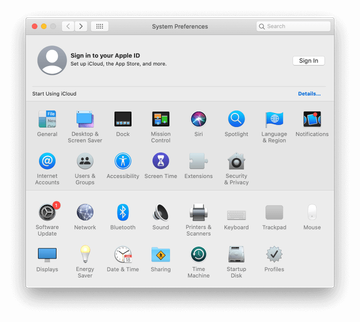
Proceed to Users & Groups and click on the Login Items tab.
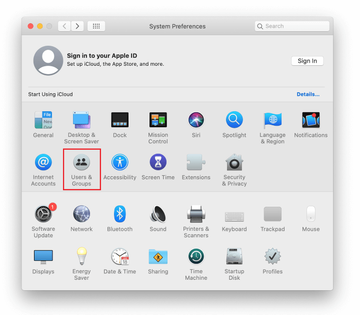
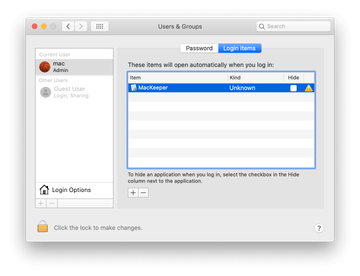
Now select Profiles under System Preferences. Look for a malicious item in the left-hand sidebar. Several examples of configuration profiles created by Mac adware include TechSignalSearch, MainSearchPlatform, AdminPrefs, and Chrome Settings. Select the offending entity and click on the minus sign at the bottom to eliminate it.
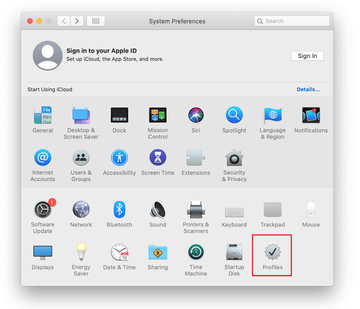
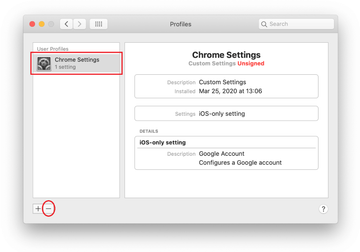
Get rid of GoSearch virus in web browser on Mac
To begin with, the web browser settings taken over by the GoSearch virus should be restored to their default values. Although this will clear most of your customizations, web surfing history, and all temporary data stored by websites, the malicious interference should be terminated likewise. The overview of the steps for completing this procedure is as follows:
- Remove GoSearch virus from Safari
Open the browser and go to Safari menu. Select Preferences in the drop-down list.
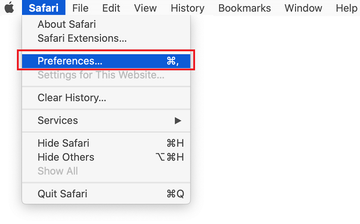
Once the Preferences screen appears, click on the Advanced tab and enable the option saying “Show Develop menu in menu bar”.
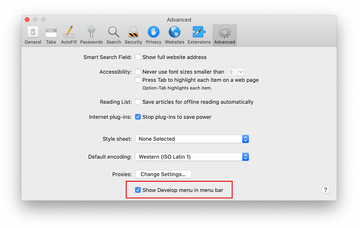
Now that the Develop entry has been added to the Safari menu, expand it and click on Empty Caches.
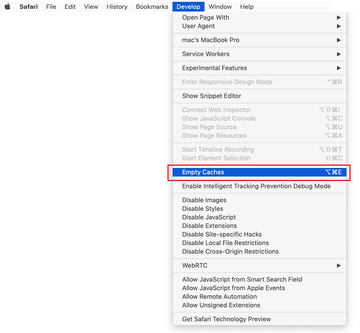
Now select History in the Safari menu and click on Clear History in the drop-down list.
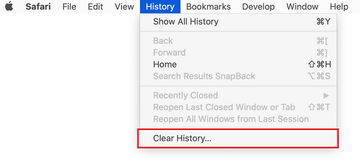
Safari will display a dialog asking you to specify the period of time this action will apply to. Select all history to ensure a maximum effect. Click on the Clear History button to confirm and exit.
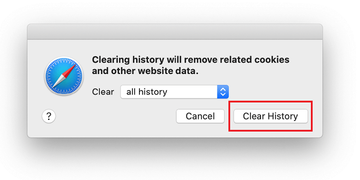
Go back to the Safari Preferences and hit the Privacy tab at the top. Find the option that says Manage Website Data and click on it.

The browser will display a follow-up screen listing the websites that have stored data about your Internet activities. This dialog additionally includes a brief description of what the removal does: you may be logged out of some services and encounter other changes of website behavior after the procedure. If you’re okay with that, go ahead and click on the Remove All button.
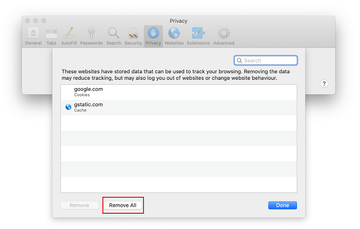
Restart Safari
- Remove GoSearch in Google Chrome
Open Chrome, click the Customize and control Google Chrome (⁝) icon in the top right-hand part of the window, and select Settings in the drop-down
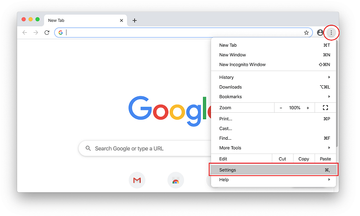
When on the Settings pane, select Advanced
Scroll down to the Reset settings section.
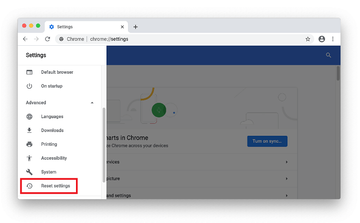
Confirm the Chrome reset on a dialog that will pop up. When the procedure is completed, relaunch the browser and check it for malware activity.
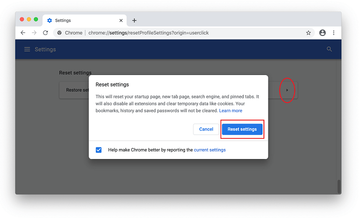
- Remove GoSearch from Mozilla Firefox
Open Firefox and go to Help – Troubleshooting Information (or type about:support in the URL bar and press Enter).
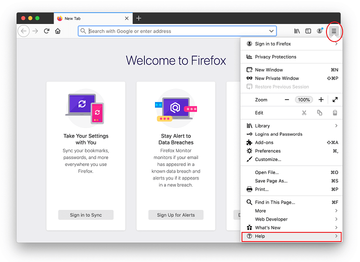
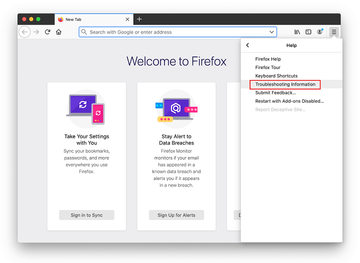
When on the Troubleshooting Information screen, click on the Refresh Firefox button.
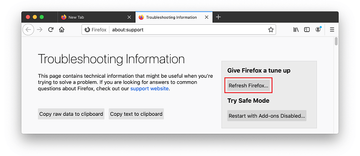
Confirm the intended changes and restart Firefox.
Get rid of GoSearch virus using Combo Cleaner removal tool
The Mac maintenance and security app called Combo Cleaner is a one-stop tool to detect and remove GoSearch virus. This technique has substantial benefits over manual cleanup, because the utility gets hourly virus definition updates and can accurately spot even the newest Mac infections.
Furthermore, the automatic solution will find the core files of the malware deep down the system structure, which might otherwise be a challenge to locate. Here’s a walkthrough to sort out the GoSearch issue using Combo Cleaner:
Download Combo Cleaner installer. When done, double-click the combocleaner.dmg file and follow the prompts to install the tool onto your Mac.
By downloading any applications recommended on this website you agree to our Terms and Conditions and Privacy Policy. The free scanner checks whether your Mac is infected. To get rid of malware, you need to purchase the Premium version of Combo Cleaner.
Open the app from your Launchpad and let it run an update of the malware signature database to make sure it can identify the latest threats.
Click the Start Combo Scan button to check your Mac for malicious activity as well as performance issues.

Examine the scan results. If the report says “No Threats”, then you are on the right track with the manual cleaning and can safely proceed to tidy up the web browser that may continue to act up due to the after-effects of the malware attack (see instructions above).
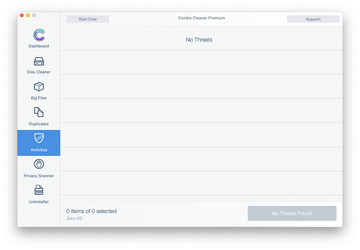
In case Combo Cleaner has detected malicious code, click the Remove Selected Items button and have the utility remove GoSearch threat along with any other viruses, PUPs (potentially unwanted programs), or junk files that don’t belong on your Mac.
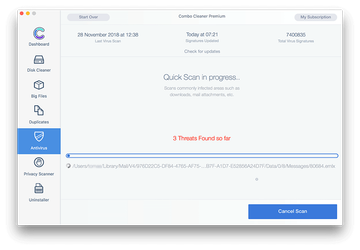
Once you have made doubly sure that the malicious app is uninstalled, the browser-level troubleshooting might still be on your to-do list. If your preferred browser is affected, resort to the previous section of this tutorial to revert to hassle-free web surfing.
